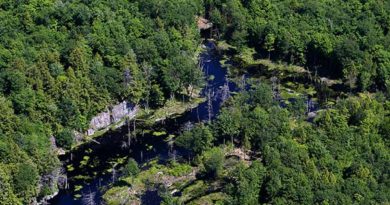Inside Wild Macaw Nests – The Fight for Survival
I grew up listening to my parent’s histories about a pristine jungle in the heart of the Amazon Rainforest in Tambopata National Reserve, a place where the beauty of Macaws conquers your heart.
They told me about the long boat drives they had to take until their Research Base Camp nearby Colorado clay lick. The nice experiences feeding the baby macaws and the technical problems in the firsts climbings. All the failures and success in the designs of the nests and all the magical moments that bring them the beginning of the Macaw Project since October of 1989.
All the histories and the old pictures they shared with me, pushed me to decide to visit this magical and mysterious world that I had created in my mind.
.jpg?width=600&name=IMG_0004%20(2).jpg)
Boat trips taking people to the first TRC (1990)

Eduardo taking a bath at Tavara River in an expedition looking for Clay Licks 1990.

Old school researchers with jeans and wide belts. Diego in Tavara expeditions 1990.
The dreamed trip takes time 6 years ago. When I arrive at Tambopata Research Center port. I couldn’t hear the rest of the people talking because of the loud sound from all the macaws in the trees in the surrounding forest. Nesting in the trees, perching on the branches and flying around. Was January 4th, just in the middle of the macaw breeding season.
In the South-east Amazon jungle, there are clear seasonal changes with food availability having its peak at the start of the wet season. Perhaps not coincidentally, the breeding season begins just as the food levels are peaking, and the chicks are ready to fledge just as they are nearing their yearly lows in February and March. (Source: Tambopata Macaw Project)

Wild macaw at Molinero Artificial Wooden Nest. (Photo: Zoltan Szabo, Macaw Project Volunteer 2014)
The large species of Macaws use natural cavities in trees for nesting excepted by the Blue and Gold Macaw that use dead palm trees. This hole appears by its own after a huge branch falls naturally. Macaws depend on this roosting cavities to lay their eggs and raise their chicks.
Nest availability may be limiting nesting of macaws, proving artificial nests can increase reproductive rates. Near big Claylicks like “Colorado Clay Lick”, you can’t imagine how many macaws use the forest. There’re no words to explain all the constantly calls and all the colorful flashes of hundreds of them flying around.
Parents tend to hedge their bets by laying up to 3 or 4 eggs in the season, even though typically only 1 or 2 ever fledge in a single season. The macaw project found that there does seem to be preferential care by the parents of the chicks born earlier and that this, more than inter-sibling competition appears to drive the differential development. (Source: Tambopata Macaw Project ).
What do you think about this kludge? Both chicks will survive? Leave your comments and keeps tuned!




